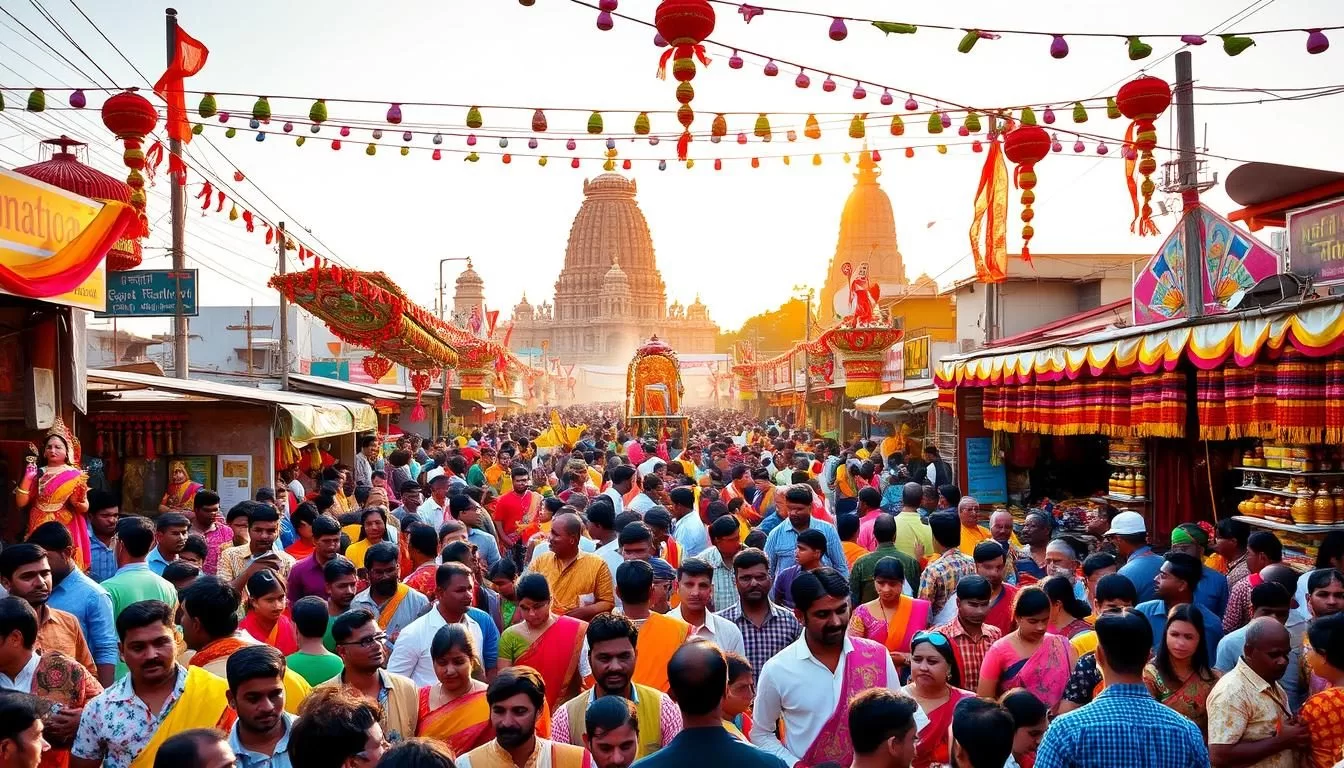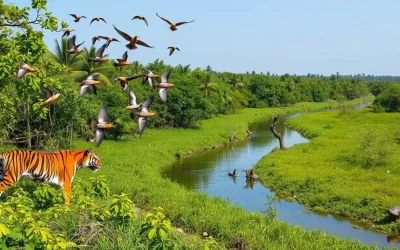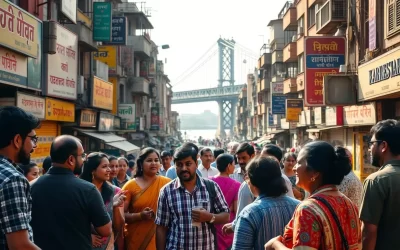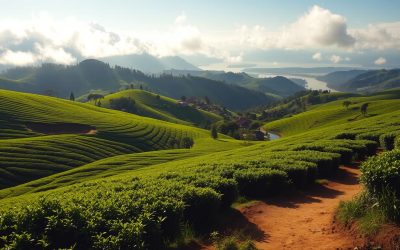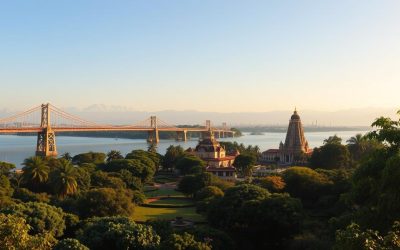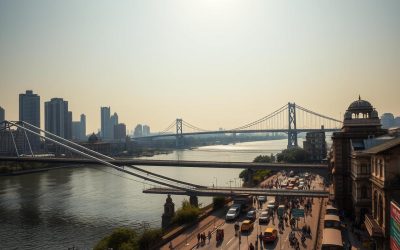As you plan your visit to this culturally rich state, you’ll be immersed in a world of colorful celebrations and traditions. The region’s festive fervor is a hallmark of its identity, making it a unique destination for travelers.
You’ll experience the essence of Bengali culture through its numerous festivals that take place throughout the year. The phrase “Baaro Maash E Tero Parbon” or thirteen festivals in twelve months, aptly captures the spirit of this vibrant culture. As you explore the local traditions, you’ll discover how these festivals blend religious significance with cultural expressions, creating immersive experiences.
By participating in these celebrations, you’ll gain a deeper understanding of the region’s rich cultural heritage and its people. Get ready to be enchanted by the warmth and hospitality of the Bengali community.
The Cultural Richness of West Bengal’s Festivals
In West Bengal, the phrase ‘Baaro Maash E Tero Parbon’ or thirteen festivals in twelve months is a way of life. The state’s cultural richness is reflected in its numerous festivals that take place throughout the year.
You’ll experience a lot of enthusiasm and excitement as you explore these celebrations, which are an integral part of life in West Bengal. From Durga Puja to Kali Puja, and Saraswati Puja, each festival has its unique significance and cultural importance.
| Festival | Significance | Cultural Importance |
|---|---|---|
| Durga Puja | Celebration of Goddess Durga’s victory | Reflects Bengali cultural heritage |
| Kali Puja | Worship of Goddess Kali | Showcases Bengali traditions |
| Saraswati Puja | Honoring Goddess Saraswati | Emphasizes the importance of education |
The spirit of these festivals brings communities together, transcending religious boundaries and showcasing the rich culture of West Bengal. As you participate in these celebrations, you’ll gain a deeper understanding of the Bengali way of life.
Durga Puja: West Bengal’s Most Iconic Celebration
The city comes alive during Durga Puja, a celebration that draws visitors from around the world. Durga Puja is a grand festival that showcases the rich cultural heritage of West Bengal. The city’s streets are filled with elaborate pandals, artistic structures that house the idol of Goddess Durga.
When and Why It’s Celebrated
Durga Puja is celebrated over ten days, typically in the month of October. It commemorates the victory of Goddess Durga over the buffalo-demon Mahishasura, symbolizing the triumph of good over evil. The festival is a time for family reunions, cultural events, and traditional rituals.
How to Experience Durga Puja Like a Local
To truly experience Durga Puja like a local, you should immerse yourself in the city’s vibrant atmosphere. Here are some key aspects to explore:
- Navigate the bustling streets of Kolkata to discover hidden gems and popular pandals.
- Participate in “pandal hopping” to visit multiple elaborate temporary temples.
- Learn about the ideal times to visit different pandals to avoid large crowds.
- Savor the special foods and sweets that are an integral part of the Durga Puja experience.
- Understand the cultural etiquette for visiting pandals and participating in ceremonies.
- Enjoy the “dhunuchi naach” (ritual dance) and other participatory aspects of the celebration.
| Aspect | Description | Tips |
|---|---|---|
| Pandal Hopping | Visiting multiple pandals to admire their artistic excellence. | Plan your itinerary to avoid crowds. |
| Food and Sweets | Traditional Bengali cuisine and sweets. | Try authentic versions at local eateries. |
| Cultural Etiquette | Respect local customs and traditions. | Dress modestly and follow local guidelines. |
By following these tips, you can have a truly immersive experience during Durga Puja.
Saraswati Puja: Honoring the Goddess of Learning
Saraswati Puja, also known as Vasant Panchami, is a vibrant celebration in West Bengal, honoring learning and the arts. This day is marked by small girls wearing colourful saris and visiting the richly decorated pandals of Goddess Saraswati. People consider Saraswati Puja one of the most unique events in West Bengal, celebrating it as the Goddess Saraswati’s return home.

It is held on the fifth day of the Magha month. The festival is a significant part of Bengali culture, emphasizing the importance of education and knowledge.
Traditions and Customs
The traditions and customs associated with Saraswati Puja are rich and varied. You’ll discover that young children are formally introduced to writing and education through the “Hathe Khori” ceremony. People wear yellow during Saraswati Puja, symbolizing the bloom of mustard fields in spring.
- The significance of wearing yellow attire, representing the vibrant mustard fields in bloom during spring.
- The tradition of “Hathe Khori” ceremony, where young children are introduced to writing and education.
- The custom of not touching books and educational materials during this day, out of respect for the goddess.
- The special foods prepared during Saraswati Puja, made with seasonal ingredients.
- Young girls dressing in traditional Bengali attire, adorned with flower ornaments.
- The musical performances accompanying the festival, honoring Saraswati’s connection to the arts.
These customs highlight the cultural depth and richness of Saraswati Puja in West Bengal, making it a festival like no other. As you experience Saraswati Puja, you’ll understand why it’s a cherished event in the region.
Kali Puja: The Festival of Lights in Bengal
One of the most revered festivals in West Bengal is Kali Puja, honoring Goddess Kali. This significant event takes place after Durga Puja, typically in October or November, and is celebrated over several days, showcasing the rich cultural heritage of the region.
Kali Puja is a festival west bengal looks forward to, where devotees keep a night-long vigil, engaging in continuous chanting and offerings to the goddess. The atmosphere is filled with the sound of reciting mantras until dawn.
Unique Rituals and Celebrations
The celebration involves several unique rituals, including the lighting of 14 earthen lamps, known as pradip, symbolizing the 14 worlds in Hindu cosmology. The goddess is adorned with hibiscus flowers, representing her fierce energy.
Special foods, including fish, meat, and sweets, are prepared as offerings and later distributed as prasad. A sacred fire is maintained throughout the night, signifying purification and spiritual growth.
- The night-long vigil with continuous chanting and offerings.
- The tradition of lighting earthen lamps symbolizing Hindu cosmology.
- The significance of hibiscus flowers in decorating the goddess.
- Special foods prepared as offerings and distributed as prasad.
- The ritual of maintaining a sacred fire throughout the night.
- Various forms of Kali worshipped in different regions of West Bengal.
Poila Baisakh: Bengali New Year Festivities
Poila Baisakh, the Bengali New Year, is a vibrant celebration in West Bengal, filled with traditions and cultural richness. It’s celebrated on April 14th every year and is observed as a state holiday. People in West Bengal believe that wearing new clothes on the first day of the year west is lucky, so they do it every year with great respect.
As part of the festivities, traders and businesspeople in West Bengal believe today is Halkhata time, a good day to start new ledgers. The traditional new year is also a time for cultural performances, including Rabindra Sangeet, and for decorating homes with alpana and rangoli.
- The tradition of “Halkhata” involves businesses closing their old accounting books and opening new ones with special ceremonies.
- Wearing new clothes on Poila Baisakh and exchanging gifts among family members is a cherished custom.
- Special Bengali sweets and foods, particularly those with sweet beginnings, are prepared for this occasion.
- Cultural performances, including Rabindra Sangeet, are central to the celebrations.
- Homes are decorated with alpana (traditional floor art) and rangoli to welcome the new year.
- Morning processions (prabhat pheris) take place in many communities to usher in the new year with music.
Cultural Significance and Celebrations
The cultural significance of Poila Baisakh lies in its rich traditions and the way people West Bengal come together to celebrate. It’s a day of new beginnings, marked by festivities, cultural events, and traditional rituals.
Lakshmi Puja: Welcoming Prosperity and Wealth
As the full moon day after Durga Puja approaches, Bengalis prepare for Lakshmi Puja, a celebration that brings prosperity home. This festival, dedicated to the Goddess of wealth, is unique to Bengalis, differing from the Diwali celebrations observed by other Hindus across India.
Lakshmi Puja is celebrated with fervor in West Bengal, typically occurring in the month following Durga Puja. On this day, families perform rituals at home, making offerings to Goddess Lakshmi to seek wealth and prosperity.
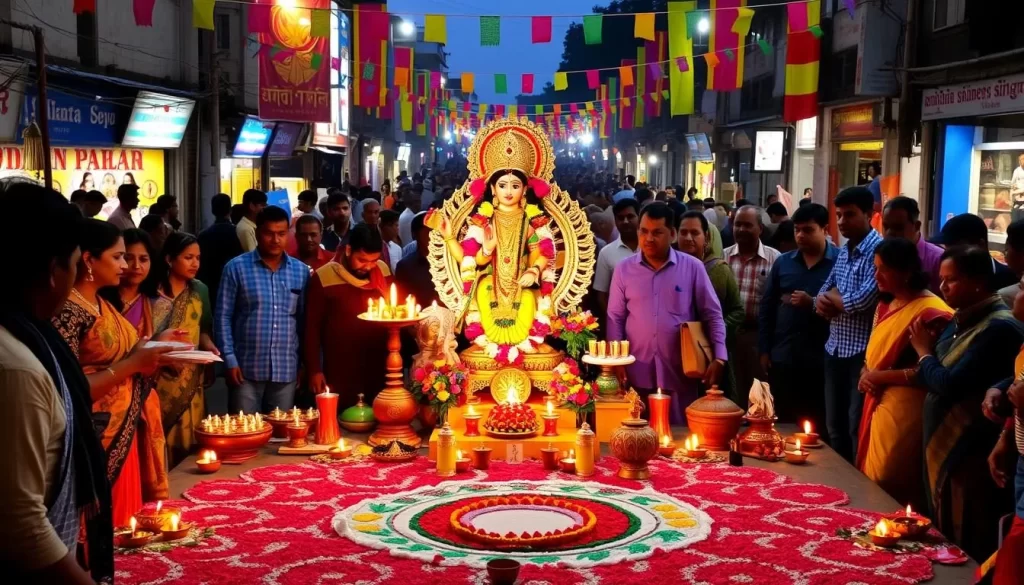
This home-based festival in West Bengal is marked by thorough home cleaning and symbolic offerings like rice, fruits, and coins, signifying the welcoming of prosperity.
Basanti Durga Puja: The Spring Festival
The spring festival of Basanti Durga Puja is a time-honored tradition in West Bengal, offering a distinct experience from its more famous autumn counterpart. Although the autumn celebration of Durga Puja is more widely known, scriptures indicate that the original Puja was performed in the spring season.
This form of worship of Goddess Durga was initially the only time the Goddess was invoked on earth. Despite the Shardiya Durga Puja gaining more popularity, Basanti Durga Puja remains very famous in the Kolkata region.
During Basanti Durga Puja, the city comes alive with the sound of conch shells and brightly lit pandals, featuring extensively decorated idols of the Goddess. People wear colorful attire and dance to the beat of ‘dhakis,’ creating a vibrant atmosphere.
| Aspect | Basanti Durga Puja | Shardiya Durga Puja |
|---|---|---|
| Timing | March-April | September-October |
| Theme Color | Yellow (Basanti Rang) | Varied |
| Significance | Original Spring celebration | More popular, widely celebrated |
Some devotees consider Basanti Puja more authentic to ancient traditions. The festival also showcases regional variations across different districts of West Bengal, each with unique characteristics, making it a fascinating festival west experience.
Jamai Shoshti: Celebrating the Son-in-Law
In the vibrant culture of West Bengal, Jamai Shoshti stands out as a unique festival that honors the bond between a mother-in-law and her son-in-law. This beautiful commemoration celebrates the complicated but underrated relationship between them, bringing warmth back into their interactions and proving to be another reason to celebrate life’s blessings.
On this special day, the son-in-law visits his in-laws’ home, where a grand party is organized in his honor. The celebration includes people from the household and acquaintances, all gathered to mark the occasion. The mother-in-law prepares extensive and mouth-watering dishes for her son-in-law, as food is an integral part of any Bengali celebration.
Jamai Shoshti is celebrated in May-June, specifically on the sixth day of the bright fortnight of the Bengali month of Jyeshtha. Here are some key aspects of this festival:
- The unique cultural significance of Jamai Shoshti as a celebration dedicated to honoring sons-in-law.
- The role of this festival in strengthening family bonds and acknowledging the important relationship between in-laws.
- The elaborate feast (bhoj) prepared specifically for sons-in-law and the special dishes included in this meal.
- The gift-giving traditions associated with this festival and their symbolic meaning.
- The rituals performed by mothers-in-law to bless their sons-in-law with prosperity and long life.
The table below summarizes the key elements of Jamai Shoshti:
| Aspect | Description |
|---|---|
| Timing | May-June (6th day of Jyeshtha) |
| Celebration | Grand party at in-laws’ home |
| Cuisine | Extensive, mouth-watering dishes |
| Significance | Strengthening family bonds |
As you explore the festivals of West Bengal, you’ll find that Jamai Shoshti is a heartwarming celebration that adds to the richness of the region’s cultural heritage. It’s a day that not only honors sons-in-law but also brings families closer together.
Chhath Puja: Honoring the Sun God
The ancient Vedic festival of Chhath Puja is a unique tribute to Lord Surya, symbolizing life and energy. It is celebrated six days after Diwali, typically in October or November.
This Hindu festival is dedicated to the worship of Surya Dev and Chhathi Maiya, seeking their blessings for sustaining life on earth. The reason behind this festival is to pay gratitude to Lord Surya for his role in maintaining life.
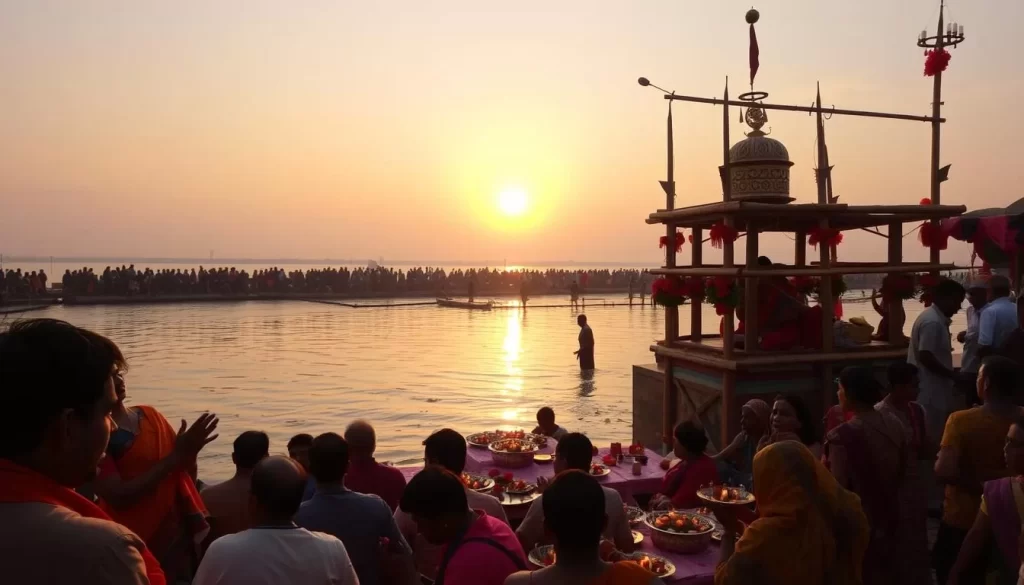
| Key Aspects | Description |
|---|---|
| Significance | Honoring the Sun God and Goddess Usha |
| Rituals | Fasting, standing in water, and offering prayers |
| Timing | Celebrated six days after Diwali |
You’ll experience the ecological significance of this festival in West Bengal, honoring both the sun and water as life-sustaining elements.
Poush Sankranti: West Bengal’s Winter Harvest Festival
Poush Sankranti, also known as Makar Sankranti in other parts of India, is a significant festival in West Bengal, celebrated with unique fervor. This festival marks the end of the Bengali month of Poush and is a celebration of the winter harvest.
During Poush Sankranti, you’ll discover the rich cultural heritage of West Bengal through its traditional sweets made from newly harvested paddy and date palm syrup, known as Patali and Khejurer Gur. The preparation of these sweets involves sugar from date palms, rice flour, coconut, and milk, showcasing the local agricultural produce.
The festival, celebrated in mid-January, holds astronomical significance as it marks the sun’s transition. For rural communities across West Bengal, Poush Sankranti is agriculturally significant, symbolizing the precursor to the harvest season.
| Aspect | Description |
|---|---|
| Festival Name | Poush Sankranti (also known as Makar Sankranti) |
| Timing | Mid-January |
| Significance | Celebration of winter harvest and sun’s transition |
| Specialties | Traditional sweets like Patali and Khejurer Gur |
Poush Sankranti is also associated with the Gangasagar Mela, a massive pilgrimage that takes place at the confluence of the Ganges and Bay of Bengal, adding to the festival’s spiritual and cultural significance.
Cultural Festivals: Dover Lane Music Festival and Kolkata Book Fair
From music to literature, West Bengal’s cultural festivals are a celebration of the state’s creative spirit. The Dover Lane Music Festival is a unique event that showcases Indian classical music, attracting prominent personalities from around the world. Held annually in Kolkata’s Nazrul Mancha auditorium, this three-day festival is a treat for music lovers.
The Kolkata Book Fair, now known as the International Kolkata Book Fair, is another significant event that has been a cultural phenomenon since 1976. As the largest non-trade book fair in Asia, it draws around 2 million visitors each year to the city. The event has evolved into a grand celebration, featuring not just books, but also candy floss vendors, singers, and more, making it a must-visit festival.
Rath Yatra: The Chariot Festival in Bengal
In West Bengal, the Rath Yatra festival is a major event that brings people together, celebrating the divine journey of Lord Jagannath. This festival, considered to be an incarnation of Lord Vishnu, is celebrated with great fervor in June and July.
The Rath Yatra tradition in West Bengal has its unique characteristics, differing from its counterpart in Puri, Odisha. The festival is held in various districts, including Kolkata, Mayapur in Nadia, Mahesh in Hooghly, and Mahisadal in East Midnapore.
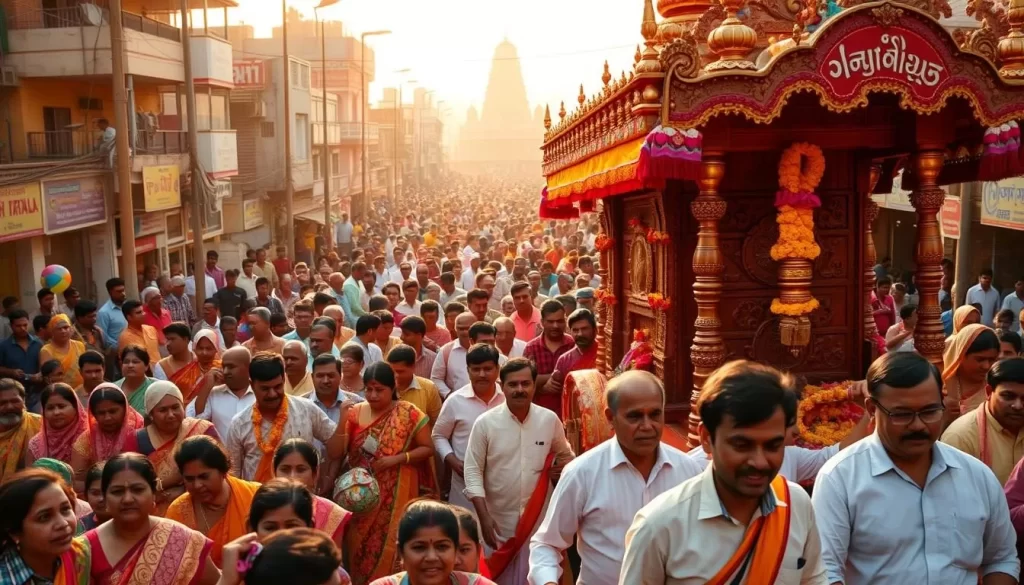
The religious significance of Lord Jagannath’s annual chariot journey lies in its symbolism of the lord’s grace and divinity. The massive chariots constructed for this festival are a testament to the community’s effort and devotion.
You can experience the vibrant culture of West Bengal through Rath Yatra, which has been a part of the state’s traditions since 1936. The festival’s connection to agricultural cycles and its celebration during the rainy season add to its uniqueness.
Bhai Phota: Celebrating Sibling Bonds
In the vibrant culture of West Bengal, Bhai Phota stands out as a significant festival celebrating the bond between brothers and sisters. This special day is celebrated in West Bengal as a unique alternative to Raksha Bandhan, with sisters praying for their brothers’ long life. The ritual involves sisters placing a tilak on their brothers’ foreheads and feeding them sweets, symbolizing the spirit of sibling love. It’s a time when people come together, strengthening family bonds.
West Bengal, India: Top Festivals to Check Out When Visiting – Planning Your Trip
With ‘Baaro Maash E Tero Parbon’ or thirteen festivals in twelve months, West Bengal offers a year-round festival experience. You can plan your visit around various festivals that take place throughout the year in different parts of the country.
Best Times to Visit for Festival Experiences
The best times to visit West Bengal for festival experiences are:
- Autumn (September-October) for Durga Puja and subsequent festivals
- Winter (December-January) for Poush Sankranti and cultural events
- Spring (February-March) for Saraswati Puja and Basanti Durga Puja
- Summer (April) for Bengali New Year and family-oriented festivals like Jamai Shoshti
By planning your trip around these festivals, you can experience the full spectrum of west bengal festivals every year.
Conclusion
Experiencing West Bengal’s festivals is a journey into the heart of its culture. You’ll discover a lot more than just ancient history. The spirit of celebration transcends boundaries, making West Bengal a year-round destination. Plan to visit during a major festival.
The above is subject to change.
Check back often to TRAVEL.COM for the latest travel tips and deals.
